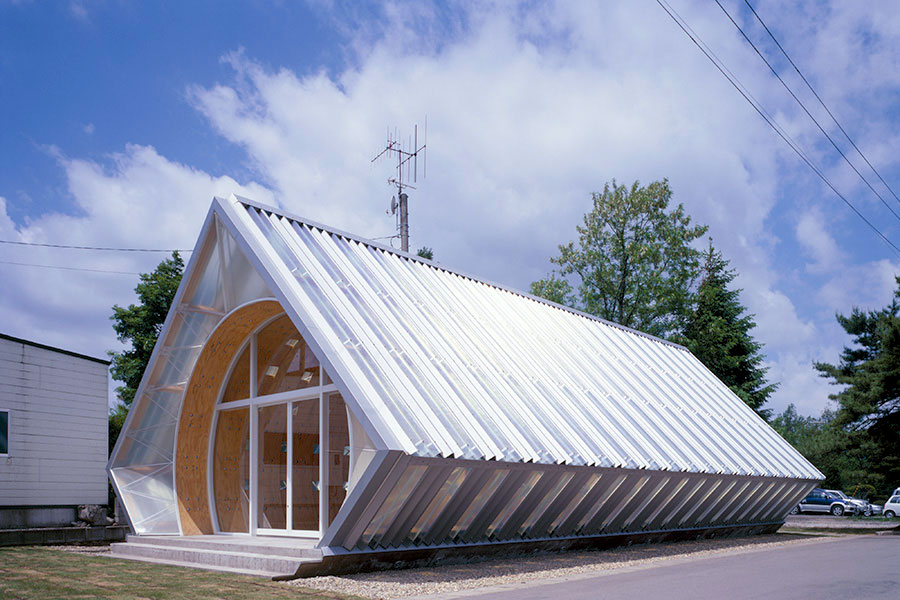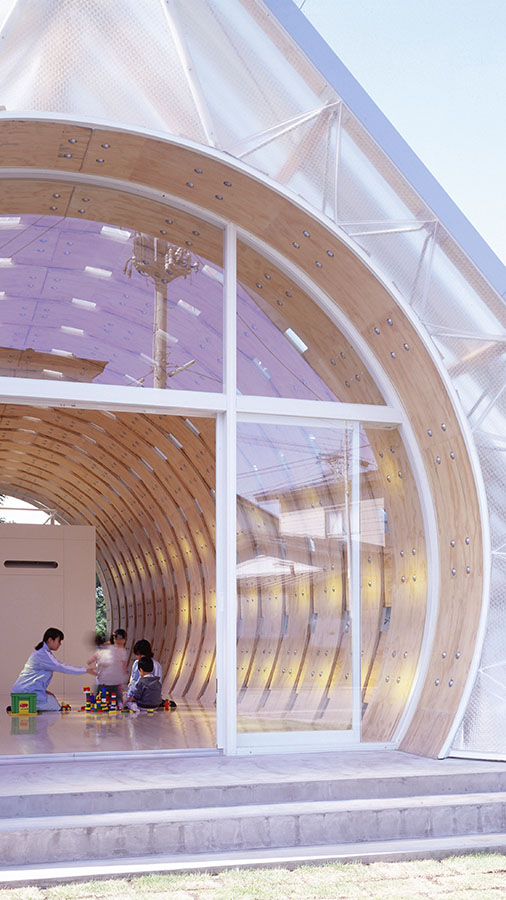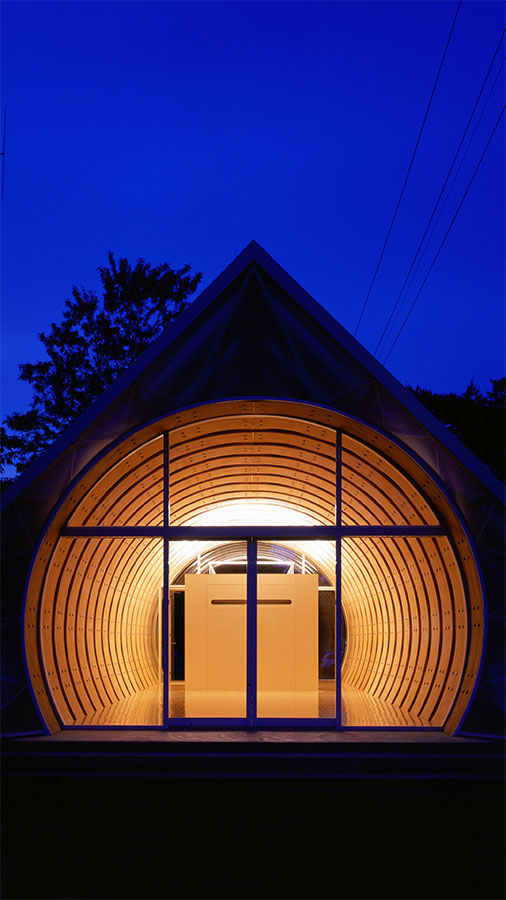Imai Hospital Daycare Center / 今井病院付属託児所
Odate City, Akita Prefecture, Japan / 秋田県大館市
2001




Unochiyo Memorial Museum in Iwakuni-City was the second collaboration with
Prof. Frei Otto after Japan Pavilion, EXPO 2000 Hannover. The site for
the project is a scenic zone, and the client requirement was to design
a Japanese-styled building with a tile roofing.
One of the main ideas during the design process was to have a rational
structural solution for parabola style roofing rather than applying a form
decoratively.The structural solution was to use “AJIRO (wicker-work) “
with thin LVL (Laminated Veneer Lumber), and suspend the it.
As a result of the structural system, the roof naturally forms a curve that is suspended from its two ends, much like traditional Japanese Architecture.
On the other hands, for the day-care center, the main structural idea was
to make a long arch that extends to form a tunnel with developed compressive
stresses, on the LVL “AJIRO” structure. From the structural idea, day
light enters the interior space from between the vertical and horizontal
LVL members.Difficulties involved in resolving the issue of structure included
the material’s tendency to thicker under compression. “ Magewappa”,
that is the special product of Odate, proved to be a more feasible alternative.Odate
has heavy snowfall, and the roofs of the buildings are required to be able
to bear a load of 450kg/sq.m of snow. In order to avoid the weight of the
snow, at an angle of 90°pitched roof was built over the LVL arches. The
stiffness of LVL was increased by using space framing with lattice member
between the circular LVL and the square pitched roof.For the roof structure,
a layer of FRP and corrugated steel folded plates was used over the LVL members to allow light through. The gaps between LVL members were covered
with glass, and the space between the roof and LVL forms a double skin
to maintain the interior environment.
Similar to the paper structure, I found that thin LVL can also form the structure for a big span, and use significantly less wood compared to the usual arch of glue-laminated wood.
「宇野千代記念館」で取り組んだLVLの網代構造をこの託児所においては圧縮材としてトンネルアーチを形成し、縦横のLVL材格子の穴から室内に適度な自然光が入る空間を考えた。しかし圧縮で使うことで厚みが増すため、結果的に網代構造というよりは、敷地である大館名物「曲げわっぱ構造」となった。大館は多雪地帯であるので、落雪する45°の勾配屋根をLVLのトンネルアーチ上に載せている。ダブルスキンの省エネルギー空間としている。